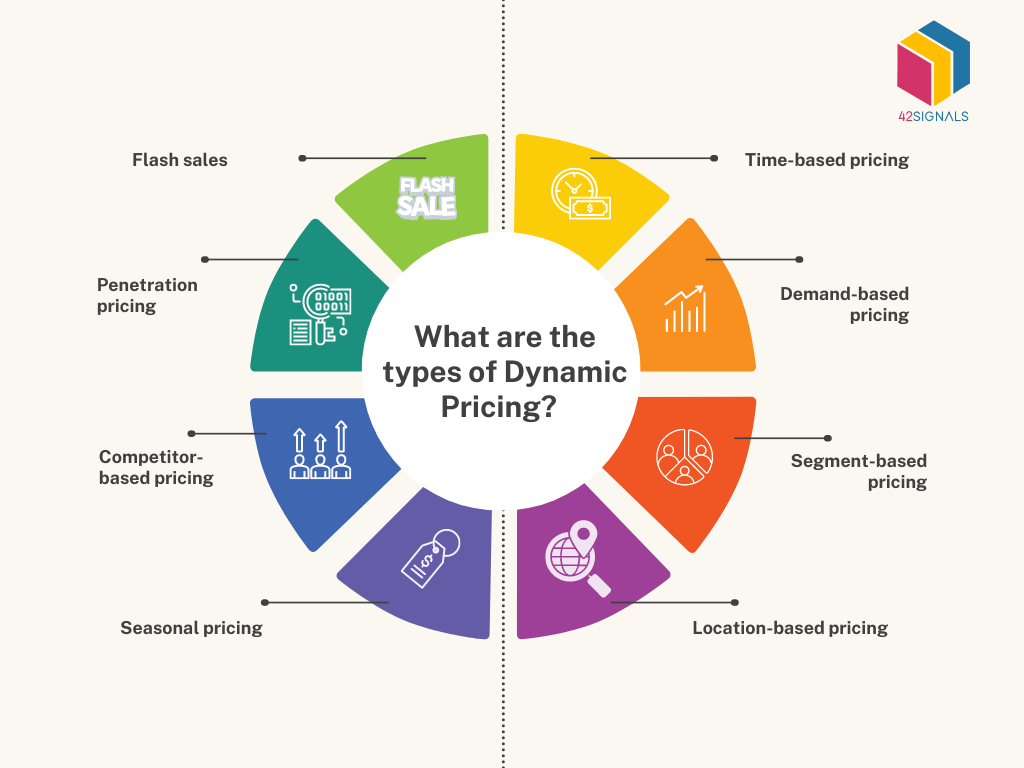What is Dynamic Pricing
Dynamic pricing in retail refers to the practice of adjusting the prices of products in real-time based on various factors such as supply and demand, competitor pricing, time of day, etc. This allows retailers to optimize their revenue and profitability by charging different prices for the same product at different times.
For example, during peak hours, retailers can increase prices to capitalize on high demand, while during off-peak hours, they can lower prices to attract more customers. Retailers can also use dynamic pricing to gain a competitive edge.
Dynamic pricing is made possible through the use of sophisticated algorithms and retail analytics tools that monitor market conditions and customer behavior in real-time.
Dynamic pricing can be controversial if not implemented ethically. Customers may feel that they are being unfairly charged more than others for the same product, leading to a loss of trust and loyalty. Therefore, it is essential for retailers to be transparent about their pricing policies and ensure that their customers understand the factors that affect the prices.
How to Build and Implement a Dynamic Pricing Model
Building and implementing a dynamic pricing model involves several steps, including:
- Gather and analyze data: The first step would be to gather and analyze relevant data, such as historical sales data, competitor pricing data, market trends, customer behavior, and other factors that can affect pricing.
- Define pricing rules: Based on the data analysis, retailers can define pricing rules and algorithms that will determine the optimal price for each product at any given time.
- Test and refine the model: Before implementing the dynamic pricing model, it’s important to test and refine it using a small subset of products and customers. This can help retailers to identify any issues or inconsistencies in the model and make necessary adjustments before rolling it out on a larger scale.
- Implement the model: Once the model has been tested and refined, it can be implemented across the entire product range. Retailers can use retail analytics tools to automate the pricing process and ensure that prices are updated in real-time.
- Monitor and evaluate the results: This can help retailers to identify any issues or opportunities for improvement and make necessary adjustments to the model. It can also help to track key performance indicators such as revenue, profit margins, and customer satisfaction to assess the effectiveness of the pricing strategy.
Building and implementing dynamic pricing in retail can be a complex process that requires careful planning, data analysis, and the use of advanced algorithms. Therefore, it is essential for retailers to have a solid understanding of the concept and the necessary resources and expertise to implement it effectively.
What are the Types of Dynamic Pricing?
There are several types of dynamic pricing strategies that retailers can use to optimize their prices and revenue. Here are some of the common types of dynamic pricing:

- Time-based pricing: This strategy involves adjusting prices based on the time of day, day of the week, or season. For example, prices may be higher during peak hours or during busy holiday seasons.
- Demand-based pricing: This strategy involves adjusting prices based on the level of demand for a product. Prices may be higher when demand is high and lower when demand is low.
- Segment-based pricing: This strategy involves setting different prices for different customer segments based on their behavior or characteristics.
- Location-based pricing: This strategy involves adjusting prices based on the location of the customer or the product. Prices may be higher in areas where there is high demand or where the cost of doing business is higher.
- Seasonal pricing: This strategy involves adjusting prices based on the season, such as offering discounts on winter clothing during summer months.
- Competitor-based pricing: This strategy involves adjusting prices based on the prices of competitors. Prices may be lower than competitors to gain market share, or higher to position the product as premium.
- Penetration pricing: This strategy involves offering low prices to gain market share or to introduce a new product or service.
- Flash sales: This strategy involves offering discounts on products for a limited time, such as a 24-hour sale, to create urgency and drive sales.
Each of these dynamic pricing strategies has its own advantages and disadvantages and may be more effective for certain products, markets, and customer segments. Retailers should carefully evaluate their options and choose the strategy that aligns with their goals and the needs of their customers.
How 42Signals can Help Businesses with Right Pricing
Retail analytics tools such as 42Signals can be extremely helpful in implementing dynamic pricing strategies. Here’s how:
- Understand Market and Customer Demand: 42Signals can help retail businesses to track the price of their competitors in real-time, which can help them choose the right price for their product.
- Predictive modeling: Retail analytics tools can use advanced algorithms to create predictive models that can forecast demand, inventory levels, customer sentiment, and more.
- Competitive analysis: Retail analytics tools can monitor competitor pricing and promotions to help retailers adjust their prices in real-time to remain competitive.
- Price optimization: Retail analytics tools can use machine learning algorithms to optimize prices based on a variety of factors, such as customer behavior, inventory levels, and competitor pricing. This can help retailers maximize revenue and profit margins.
- Real-time pricing: Retail analytics tools can provide real-time pricing recommendations to help retailers make pricing decisions on the fly based on changing market conditions.
- Inventory management: eCommerce analytics tools can help retailers optimize inventory levels based on customer demand and sales patterns. This can help retailers avoid stockouts, reduce overstocking, and more.
Retail analytics tools provide retailers with the insights and recommendations they need to make data-driven pricing decisions in real-time. This can help retailers stay competitive, maximize revenue and profits, and meet the evolving needs of their customers. Haven’t tried out 42Signals yet? Schedule a free demo by writing to sales@promptcloud.com.





